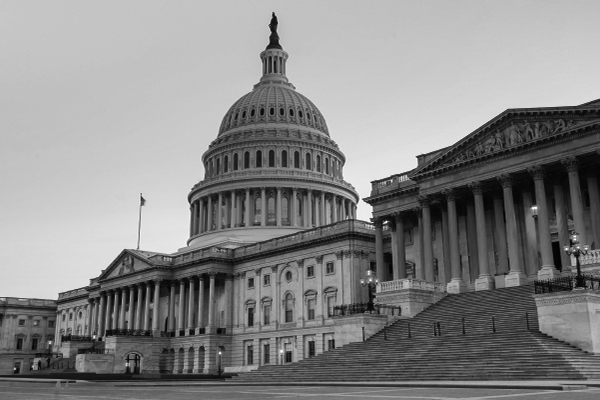Biofuels: A Little Green Lie
This is Part 3 of a three part series comparing biofuel mandates in the United States and the European Union. Part 2, which focused on increasingly unattainable mandates in the U.S. and EU, was published yesterday.

Image: Flickr/snake.eyes
Biofuel mandates in the U.S. and EU impose enormous burdens on energy producers and consumers for negligible if not negative environmental impacts. These burdens include higher food prices, increasingly unattainable mandates, and the unintended consequence of fuels that produce more pollution, not less.
This is part three of a three part series on U.S. and EU biofuel policies. Part 1 examined the impact of U.S. and EU biofuel policies on food prices. Part 2 highlighted the unrealistic burdens that U.S. and EU biofuel mandates place on obligated parties. Now we turn our attention to environmental myths surrounding biofuels.
Biofuels: A Little Green Lie
U.S. and EU biofuel policies are similar and provide for useful comparisons. America’s Renewable Fuel Standard (RFS) requires oil refiners to blend increasing amounts of biofuel, mostly corn-based ethanol, into gasoline, with the goal of blending 36 billion gallons by 2020. In contrast, Europe’s Renewable Energy Directive (RED) mandates that 10 percent of the EU’s transportation fuels come from renewable sources by 2020. However, the European Parliament voted last week to slash the biofuel mandate by 40 percent amid concerns about rising food prices and environmental damages.
One of the assumptions underlying U.S. and EU biofuel mandates is that biofuels are good for the environment. Recent studies have cast doubt on these claims. While some studies find that some biofuels have a net positive impact on the environment, other studies find that many biofuels are either not as green as initially thought or produce more greenhouse gas emissions than the fuels they are intended to replace.
For example, burning ethanol versus gasoline can actually increase air pollution, particularly ozone. Stanford environmental engineer Mark Jacobson finds that burning ethanol adds 22 percent more hydrocarbons to the atmosphere than burning gasoline, leading to increases in tropospheric ozone that have been linked to a variety of negative health effects. As Jacobson explains, “Due to its ozone effects, future E85 may be a greater overall public health risk than gasoline…It can be concluded with confidence only that E85 is unlikely to improve air quality over future gasoline vehicles.”
More recent research has reached a similar conclusion that ethanol increases ozone pollution. The Union of Concerned Scientists, an environmental group, cautions, “If done wrong, the production of biomass for biofuels like ethanol could destroy habitats, worsen water or air quality, limit food production and even jeopardize the long-term viability of the biomass resource itself.” That hardly sounds good for the environment.
In addition to air pollution, there is evidence that biofuels can also increase greenhouse gas emissions. A study published in Science, a peer-reviewed journal, finds that corn-based ethanol nearly doubles greenhouse gas emissions over the next three decades and continues to increase emissions for the next 167 years. The Energy and Resources Group of the University of California, Berkeley finds that “if indirect emissions [resulting from the production of ethanol] are applied to the ethanol that is already in California’s gasoline, the carbon intensity of California’s gasoline increases by 3% to 33%.”
Unlike the U.S., the EU has a statutory goal of reducing the carbon intensity of motor fuel. The EU’s Fuel Quality Directive (FQD) mandates fuel suppliers and refiners to reduce the carbon intensity of transportation fuel by 6 percent in 2020. EU planners likely thought RED and FQD were mutually supportive mandates, when in fact it is possible that compliance with the ethanol mandate comes at the expense of the fuel quality mandate. This highlights the unintended consequences so common when government bureaucrats try to engineer what they view as more desirable economic outcomes.
Conclusion
The United States and the European Union have strikingly similar biofuel policies. Both require adding greater and greater amounts of biofuel into gasoline, regardless of whether it makes economic sense. America’s RFS requires blending 36 billion gallons of biofuel into gasoline by 2022, while EU’s RED mandates that 10 percent of the fuel supply comes from renewable sources by 2020.
Although their broad mandates are similar, the U.S. and EU are currently moving in different directions. Finally realizing the error of their ways, the EU Parliament voted to cut its RED to from 10 percent to 6 percent of the EU’s fuel supply by 2020. Meanwhile, the U.S. EPA recently increased the overall RFS for 2013, though the agency signaled a willingness to reduce the 2014 mandate given the looming blend wall.
The facts are clear: biofuel mandates in the U.S. and EU raise food prices and can harm the environment. Moreover, the mandates imposed by government bureaucrats in Washington and Brussels are unrealistic and increasingly unachievable. It is time for America to take the lead—as opposed to following Europe—in eliminating unworkable and counterproductive energy mandates.
IER Policy Associate Alex Fitzsimmons authored this post.


